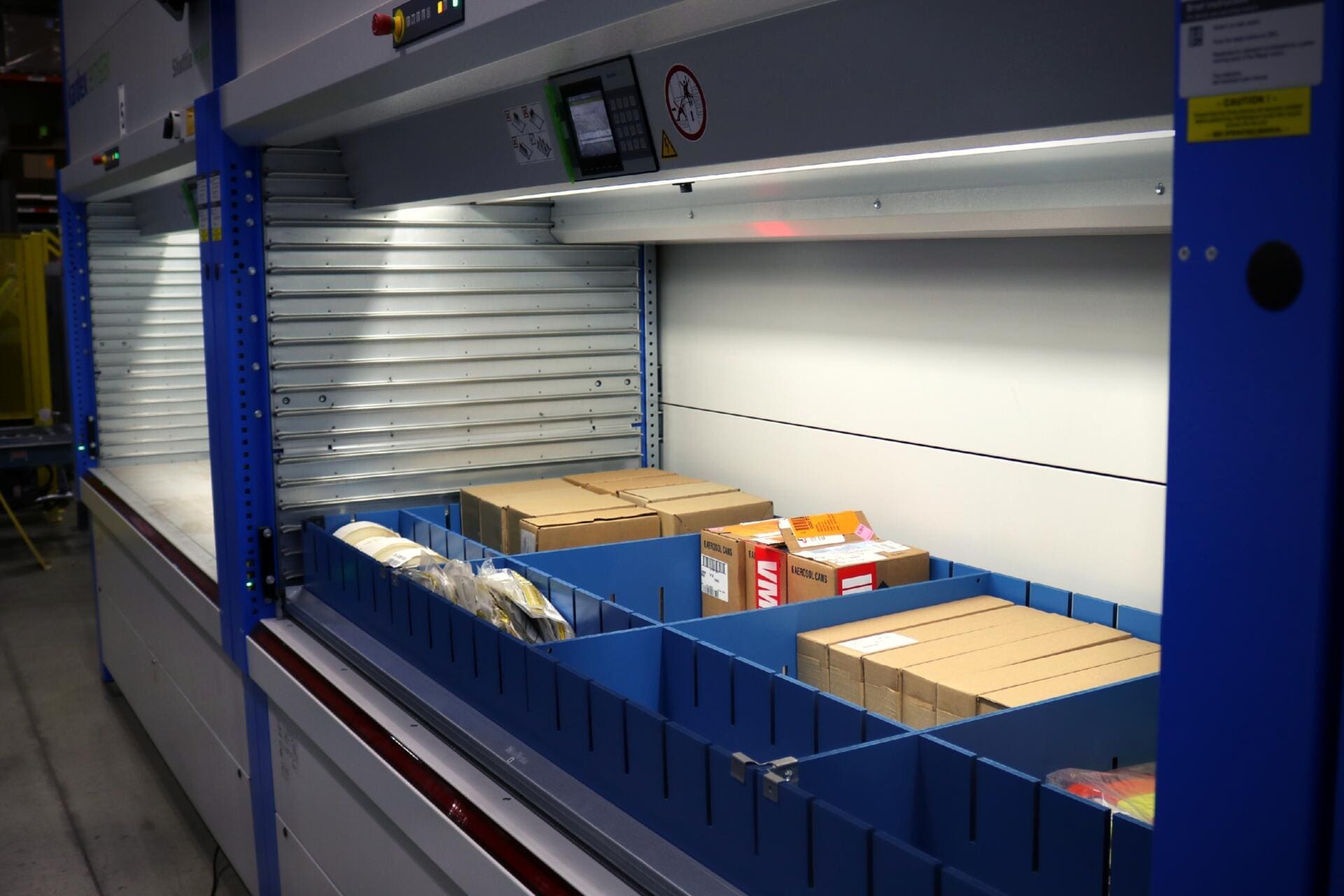In the increasingly digitized world of e-commerce, businesses face a growing need to be faster and more efficient. This is especially true in the realm of e-commerce fulfillment, where customer satisfaction hinges on the speed and accuracy of order processing, inventory management, and delivery.
To help with these tasks, many companies rely on outside experts called third-party logistics providers (3PL) who can offer a comprehensive suite of services to manage their supply chain effectively. However, as customer expectations continue to evolve, 3PL providers need to keep one step ahead with the latest technology to improve their services.
This article outlines how technology, especially automation, is making a big difference in how 3PL providers handle online orders and why it matters.
Understanding Technology-Enabled 3PLs
Before delving into the specifics of how automation technology is revolutionizing third party logistics, it’s important to understand what a ‘technology-enabled 3PL’ entails. Essentially, these are logistics providers that leverage cutting-edge technology solutions to streamline shipping and order fulfillment. They combine traditional logistics services, such as inventory warehousing, picking, packing, and shipping, with goods-to-person automation, and sophisticated software that integrates data from various sources. This combination of technology and logistics provides an end-to-end e-commerce fulfillment solution that enhances visibility, efficiency, and accuracy.
Investing in Automation Technology
The cost of initially implementing automation technology can be substantial. It includes expenses for purchasing equipment, software, and infrastructure changes. But the upfront investment should be compared to the expected long-term benefits, which are outlined in the section below.
For 3PLs, it’s essential to conduct a comprehensive cost-benefit analysis to determine the overall cost efficiency of implementing automation technology. This analysis should consider the specific circumstances and goals of the 3PL and its clients, as well as industry trends and competitive pressures. Automation can be a valuable investment for many 3PL providers with benefits that can be shared with clients through smart-task completion. But automation technology should be strategically planned and executed to maximize cost efficiency and long-term success.
The Benefits of Using a Technology-Enabled 3PL
E-commerce fulfillment automation is the integration of technology with business resources to create a seamless process from start to finish. By automating established best practices, it accelerates processes, enhances efficiency, reduces human errors, and saves on costs and time.
The decision to partner with a technology-enabled 3PL offers a host of advantages for e-commerce businesses. Here are the top nine benefits.
1. Efficiency through Automation
Automation eliminates the need for manual order entry and dispatching, thereby saving time and reducing the chance of errors. With a 3PL’s software integrated directly with online storefronts, the warehouse is notified the moment a new order is placed. Each step in the order fulfillment process is then documented and updated in real-time, providing sellers with up-to-date information on the status of every order.
Automation can also come in the form of goods-to-person automation such as collaborative robots, automated sortation, or box-on-demand. These types of automation solutions help support employees, reduce carbon footprint, and create efficiencies through smart task completion.

2. Faster Order Processing
Automation allows for faster order processing through secure and effective data exchange. Administrative tasks can be automated, freeing up time and resources for other strategic growth activities.
3. Optimized Warehousing
Automation algorithms can identify the optimal fulfillment center for prompt, efficient delivery of orders. With access to a nationwide distribution network and millions of square feet of fulfillment space, businesses can find the ideal warehouse location for any circumstance. Additionally, goods-to-person automation solutions can assist workers, improve accuracy, and speed up and streamline item retrieval.
4. Faster Delivery Times
Customers expect fast delivery as part of their purchasing experience. Fulfillment automation creates workflow efficiencies to maintain speedy delivery times, ensuring products are delivered as designated by the brand. 3PLs, like SCI, who have integrated contract logistics and transportation solutions can streamline these services even more and simplify your supply chain.
5. Cost-Efficiency
Automation can reduce the need for manual labour, which is helpful to offset labour shortages. This reduction in labour costs can lead to long term savings. Automation also results in increased throughput with improved speed and efficiency of order processing, warehousing, and transportation. This can lead to more orders processed and increased capacity to serve more customers. Automation can also make it easier to scale operations up or down according to demand, helping to optimize resource usage. Automation technology can even help track and analyze operational costs, enabling 3PLs to identify areas for cost reduction and efficiency improvement.
6. Data-Driven Decision Making
Automation technology allows 3PLs to collect, integrate, and centralize data from various sources, including warehouse management systems (WMS), transportation management systems (TMS), sensors, and IoT devices. This integration creates a single source of truth for operational data. Automation systems provide real-time data, offering immediate insights into inventory levels, order statuses, and transportation metrics. This real-time access enables quicker decision-making.
Automation technology can also leverage historical data and machine learning algorithms to predict trends, demand fluctuations, and potential issues. This aids in proactive decision-making. Automation helps optimize inventory levels by monitoring stock in real-time and suggesting reorder points. Data-driven decisions on inventory management can reduce holding costs and stockouts.
Advanced analytics provided by fulfillment software can even help businesses make more informed decisions regarding their shipping and logistics strategies. Custom metrics, such as revenue of orders shipped by day, sales by channel, peak fulfillment times, and sales and quantity of orders based on delivery zones, can offer valuable insights, guiding more effective supply chain decisions.
7. Smoother Returns Management
Automation streamlines the returns process by automating the initiation, authorization, and tracking of returns. This speeds up the handling of returned items, reducing customer wait times and operational delays. Automation also aids in optimizing the logistics and transportation aspects of returns, reducing transportation costs, and improving the speed of return item processing. Automation technology can set up tracking and alerts for customers to know when their package is arriving and how they can make a return. Automated systems can also print return labels, sort returned items, and direct them to the appropriate processing areas, reducing manual labor and minimizing errors. Finally, automation ensures that returned items are promptly reflected in inventory management systems. This helps prevent issues like overstocking or overselling and allows for quicker restocking or resale of returned products.
8. Reduction in Errors
By automating the order fulfillment process, technology-enabled 3PLs can significantly reduce the likelihood of human error. Integrated systems offer greater transparency, allowing sellers to monitor the accuracy of the 3PL’s operations at every stage. Automation systems can also alert 3PLs to potential risks and issues, such as supply chain disruptions or compliance violations, allowing for timely responses.
In e-commerce and supply chain management, automation ensures that orders are processed accurately, reducing the risk of shipping the wrong items or incorrect quantities. Automated systems can also keep track of inventory levels in real-time, reducing the chances of overstocking or overselling products.
9. Enhanced Customer Service
A smooth order fulfillment process is key to customer satisfaction. Fulfillment software provides sellers with a comprehensive view of the entire process, enabling them to improve service delivery. By offering up-to-date information, technology-enabled 3PLs help businesses meet the fast and accurate customer service standards expected in today’s next-day landscape. Automation technology can help create different categories to apply specific values on customer orders, lifetime cycle, and acquisitions. This data-driven approach helps improve business strategy and optimize the entire supply chain.
Why is Automation Technology Important for E-commerce Sellers?
While automation offers numerous benefits, it’s essential for businesses to assess when it’s the right time to implement an automated fulfillment solution. Here are some factors to consider:
Task Efficiency
If your business is spending excessive time on manual, repetitive tasks such as triggering shipping notifications, identifying best-selling items, managing refunds, and pinpointing best sales channels, automation can significantly streamline these processes.
Cost Savings
Compare the costs of an ecommerce fulfillment automation software solution with the cost for roles necessary to manually perform the work. By eliminating manual tasks, automation can result in significant cost savings, allowing resources to be redirected towards growth initiatives.
Improved Customer Service
Automation can help businesses gain a deeper understanding of their customers’ purchasing behavior. This intelligence can guide strategies for inventory forecasting, communication, and other growth initiatives, all geared towards improving the customer experience.
Competitiveness
Without process efficiency, businesses risk being left behind in the fast-paced world of e-commerce. By leveraging data-driven insights, 3PLs can differentiate themselves from competitors by offering more efficient, cost-effective, and responsive services.
SCI’s Intelligent Automation Solutions
SCI’s tagline ‘we’ll make you even better’ embodies our continuous improvement focus. The combination of our progressive technologies including tools, integrations and automation enable you to mitigate risks, maximize production capacity, increase productivity, and optimize operations to save on your bottom line.
From seamless integrations with our API catalog, operational efficiencies with our automations, through to our award-winning Business Intelligence Tool for end-to-end visibility; we give you the competitive advantage to grow and keep steps ahead of consumer expectations. We are also proud to provide a ready-to-deploy suite of integrated industry-leading solutions such as collaborative robots, box-on-demand, goods-to-person, and automated sortation.
SCI is committed to continue investing in automation solutions to help reduce carbon footprint, support our employees, and share the benefits of smart task completion.
Conclusion
In today’s competitive e-commerce landscape, businesses need to leverage every tool at their disposal to stay ahead. Technology-enabled 3PL providers, with their advanced automation capabilities, offer a powerful solution for businesses seeking to streamline their e-commerce fulfillment operations. By embracing automation, businesses can enjoy enhanced efficiency, cost savings, reduced errors, and improved customer service, all of which contribute to a more robust and competitive business model.
Contact SCI’s team today to discover how our technology forward approach to logistics, fulfillment, and transportation can revolutionize your supply chain and change the pace of how you do business.



